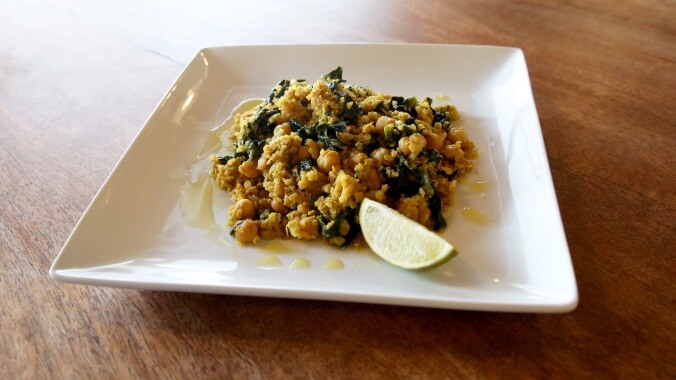Dishes that make the leap from being cooked in people’s kitchens to being photographed and posted and shared online enough times to become internet phenomena often involve some sort of gimmick. These are recipes so easy that making them feels akin to partaking in trickery. There was the single-ingredient banana “ice cream” a handful of years ago, or Marcella Hazan’s hands-off tomato-butter spaghetti sauce. Such dishes are delicious, yet come with the suspicious sense that one is somehow circumventing the cooking process.
That’s why it’s heartening to see a more involved, yet still relatively simple, dish get some attention. Alison Roman’s recipe for chickpea stew with coconut and turmeric first appeared on The New York Times in late November, and in the ensuing months the Dining In author’s hearty vegan meal has been cooked and photographed and shared thousands of times online. (This isn’t the first instance of one of Roman’s recipes taking off in this way. Last year, her chocolate chunk shortbread cookies were similarly inescapable.) The recipe—or, #TheStew—isn’t that far off from others that Roman and fellow New York Times columnist Melissa Clark are in the habit of creating. The dish is substantive and relatively healthy; it doesn’t take long to prepare; and most importantly, it tastes good. The coconut milk lends a creaminess, the Indian flavors a comforting warmth, to what might otherwise come across as ascetic winter fare.
But no online recipe gets made this many times without modifications from home cooks—Roman herself welcomes such adjustments—and this one has a number worth doing. Perhaps therein lies the recipe’s appeal: how flexible it is, how it encourages people to make it their own.
- Add jalapeño
- Add more spices
- Only use one can of coconut milk
- Crisp the garnish chickpeas separately
- Add quinoa
- Make the (optional) pita as good as the rest
- Add lime before serving
Add jalapeño
It was surprising to see jalapeño missing from the original recipe, given the other ingredients, namely the onions, ginger, and garlic. We suggest mincing the pepper, and including as much of the ribs and as many of the seeds according to how spicy you want it. Regardless, the heat that a jalapeño will lend to the dish will be balanced by the coconut milk, so one pepper will never make it too spicy. Add along with the garlic, onion, and ginger.
Add more spices
Some people in the comments section on the original recipe have recommended adding garam masala or curry powder. We do, too. Somewhere in the teaspoon range. Add with the turmeric.
Only use one can of coconut milk
If you’d like to cut down on the fat content, would like a looser stew, or want to add quinoa later, you can certainly get by with only one can of coconut milk. As with the spice level, this has to do with personal preference. We’ve made it both ways, and both are delicious.
Crisp the garnish chickpeas separately
This one is less preference than science. The chickpeas don’t crisp when sautéed along with the onion mixture—there’s too much moisture from the aromatics—so if you’d actually like the cup of garnish chickpeas to be crunchy, crisp them up in a separate, small sauté pan. We think it’s worth the extra effort in order to vary the dish’s texture.
Add quinoa
Maybe you don’t have naan or pita or other flatbread around to serve with the dish and want a little something in its place, or maybe you just like having all of your food together in one big pile. Either way, adding quinoa adds protein. Doing so also thickens the dish, which means you probably don’t need that second can of coconut milk. If using, add a cup of quinoa after you’ve added the coconut milk and it’s all been simmering for about 15 minutes.
Make the (optional) pita as good as the rest
Roman adds the optional “toasted pita, lavash, or other flatbread” to go with the stew. We toasted our pita, which was especially tasty when used to scoop up the stew. Brush a thin layer of olive oil onto the bread, add more spices—we sprinkled on a sweet curry powder and za’atar—then slice into eighths and spread out on a rimming baking sheet. Put it in a hot oven (450 degrees or thereabouts) for five minutes for crispy edges.
Add lime before serving
The dish cries out for more acid than just the yogurt. Plus, limes are cheap, and while scurvy would be an incredibly metal disease to contract in 2019, the street cred probably isn’t worth the bleeding gums. Just before serving, squeeze as much fresh lime juice on top as you want or need.









































